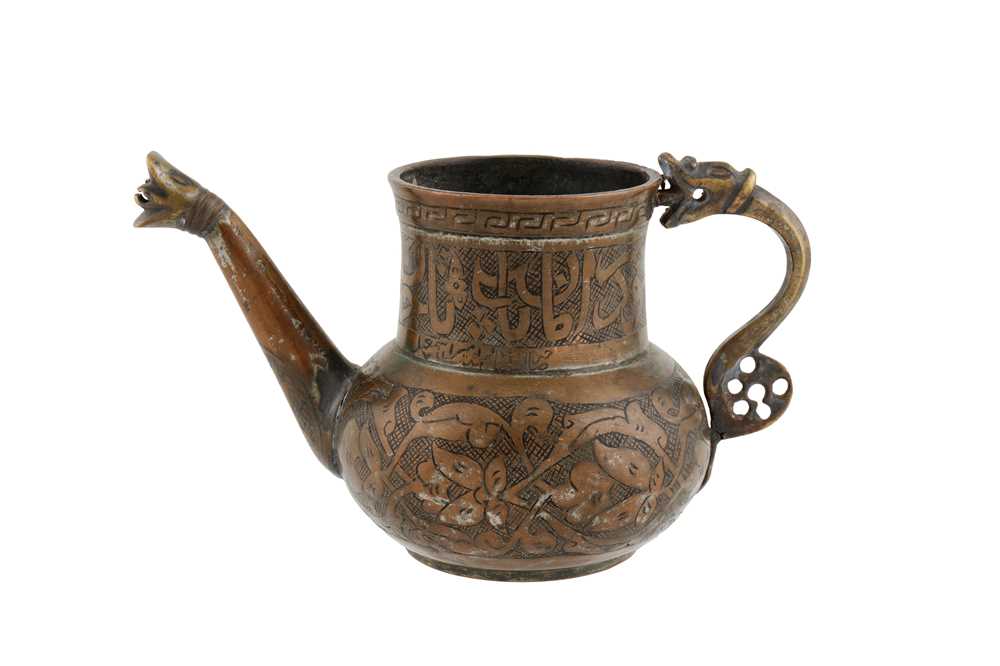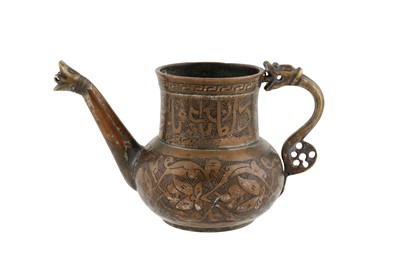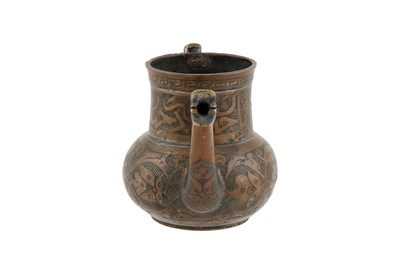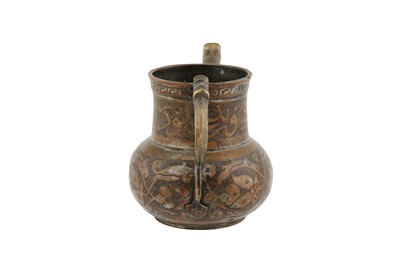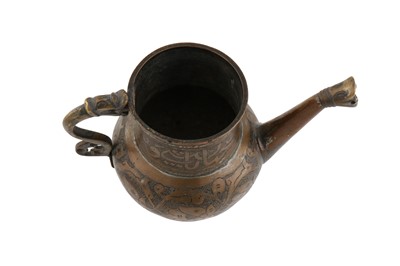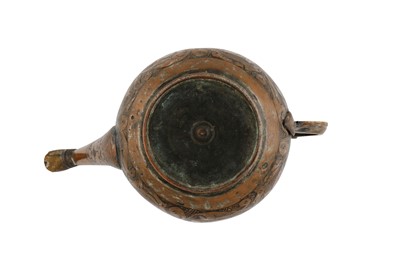28th Apr, 2023 14:00
Islamic & Indian Art
A SMALL INCISED TINNED COPPER TIMURID JUG WITH A DRAGON HANDLE AND SPOUT
Iran or Herat, Central Asia, late 15th - early 16th century
A SMALL INCISED TINNED COPPER TIMURID JUG WITH A DRAGON HANDLE AND SPOUT
Iran or Herat, Central Asia, late 15th - early 16th century
Of compressed globular shape, resting on a short circular foot, rising to narrow shoulders and a tall cylindrical neck, with a slightly everted lip, the sides featuring a handle with dragon head and openwork tail, and a tapering dragon-headed spout, the body incised with a continuous decorative pattern of stylised lotus blooms and scrolling foliate stems against a hatched ground, the neck with two narrow fretwork bands framing a central calligraphic register in stylised naskh script with a Persian poem delivering protection to the owner, reserved on a hatched ground, at the base of the neck two later-added ownership inscriptions, one reading Feizullah Mir Ismail, the spout featuring a floral cartouche on the underside, 7cm diam. and 10cm high.
This copper-alloy jug (mashrabah) is a fine example of Timurid metal drinking vessels, most of which survive without handles or spouts. According to Linda Komaroff, the globular shape and engraved floral patterns of these Timurid jugs draw close parallels to Chinese Yuan and Ming ceramics and textiles, imported into the Timurid Empire throughout the 15th century (The Golden Disk of Heaven: Metalwork of Timurid Iran, 1992, p. 54). The presence of dragon motifs, often located on the handle and spout, is also linked to Chinese culture and traditions, where dragons were considered auspicious creatures symbolising power and strength and providing protection.
Timurid jugs of this kind were typically used as wine vessels in courtly settings, as depicted in numerous 15th-century Persian miniature paintings. Often made of brass, they were enhanced with silver-inlaid decorations and inscriptions, either providing good wishes to a patron, the name of the artist, or the date of production. The earliest known example is the white jade jug made for Ulugh Beg (1420 - 1449), now in the Calouste Gulbenkian Foundation, Lisbon (Thomas W. Lentz and Glenn D. Lowry, Timur and the Princely Vision, 1989, p. 144, fig. 46), which provides further evidence of the cross-material development of this popular luxury vessel.
Do you have an item similar to the item above? If so please click the link below to submit a free online valuation request through our website.
